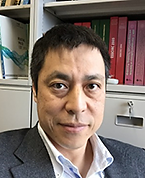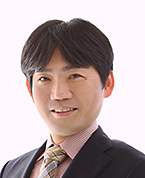Keynote Speakers
Opening Session Opening Session
Room
F201, F202
Date and Time
11/30 (Wed) 12:30-14:20
Abstract
The opening session starts with a welcome address and a brief introduction of the event by the APMC 2022 Steering Committee Chair, followed by congratulatory addresses from invited representatives. After the opening ceremony, the APMC 2022 opening session goes on to two Keynote Addresses.
Keynote Address 1 Will Terahertz Communication Change the World?
Speaker
Prof. Minoru Fujishima (Hiroshima University, Japan)
Abstract
In the sixth generation (6G), terahertz communications, including the 300 GHz band, are finally being used for wireless communications. 300 GHz band has a contiguous 44 GHz frequency band specified for communications. Therefore, communication speeds in excess of 100 Gb/s are expected. On the other hand, however, it has been thought that the higher the frequency, the shorter the communication distance becomes, limiting it to short-distance communications. However, free-space optical communication, which has a much higher frequency than terahertz, enables long-distance communication between satellites. If conditions are constant, there is no theoretical relationship between carrier frequency and communication distance. However, in order to expand the frequency bandwidth to achieve a high data rate and to ensure the required signal-to-noise ratio, it is necessary to increase the receiving power. Therefore, beamforming is essential for wideband communications to increase receive power using limited transmission power. Beamforming also improves power efficiency during transmission, thus reducing overall system energy consumption. In this talk, the future of terahertz communications will be discussed. Consider how the world would change if ideal terahertz communications could be realized.
Biography

Minoru Fujishima received his Ph.D. from the University of Tokyo in 1993, and after working as an assistant and associate professor at the University of Tokyo, he has been a full professor at Hiroshima University since 2009. He was a visiting professor at the Katholieke Universiteit Leuven, Belgium, from 1998 to 2000. He was formerly engaged in research on design and modeling of CMOS and BiCMOS circuits, nonlinear circuits, single-electron circuits, and quantum computing circuits, and is currently interested in research on ultrahigh-speed wireless communications using terahertz. He served as a distinguished lecturer of the IEEE Solid State Circuits Society, Chair of the IEEE Japan Council Chapter Operations Committee, and is currently President of the Electronics Society of the Institute of Electronics, Information and Communication Engineers. He is a fellow of the Institute of Electronics, Information and Communication Engineers, a senior member of the IEEE, and a member of the Japan Society of Applied Physics.
Keynote Address 2 Bioelectromagnetics: Human Safety and Device Performance Evaluation
Speaker
Prof. Akimasa Hirata (Nagoya Institute of Technology, Japan)
Abstract
For wireless devices used in proximity to human body, two aspects should be considered: human protection from electromagnetic field and performance in the presence of human body. This talk briefly mentioned about these topics, including the research necessity.
1) There exist public concerns about adverse health effects for exposure to electromagnetic fields. To protect human from electromagnetic fields, a two-tier approach has then been applied in our daily life. First, the exposure standards are developed based on the threshold of adverse health effect. The limit of induced physical quantities in human body, such as induced electric field and specific absorption rate (SAR), are derived considering the reduction factor. The safety of the products should be assessed following the method of product standards. The relationship between these two types of standards is explained including recent standardization related to 5G wireless communication system.
2) From late 1990s, the radiation pattern and input impedance of handset antennas have been analyzed in the presence of the human head. Later, optimized performance of such antennas was explored in addition to its compactness. The propagation characteristics of radio waves are analyzed for body area networks. In addition, wearable sensing of vital signs, such as heart rate, respiration, and other physical activities are wirelessly transferred to smartphones for health care application. These aspects are briefly mentioned emphasizing the effect on the human body.
Biography

Dr. Hirata received the B.E. and Ph.D. degree in communications engineering from Osaka University, Suita, Japan, in 1996 and 2000, respectively. In 2001, he joined the Department of Communications Engineering, Osaka University, as an Assistant Professor. In 2004, he moved to Nagoya Institute of Technology where he is currently Full Professor and Director of Research Center. His research interests include electromagnetic safety, EMC, antennas, filters, risk management system for heat-related illness, and related computational techniques. Dr. Hirata is an Associate Editor of the IEEE Transactions on EMC and an executive editorial board member of Physics in Medicine and Biology.
He is a member of the main commission and Chair of a project group of the International Commission on Non-Ionizing Radiation Protection (ICNIRP) since 2015, a member of its administrative committee and a subcommittee (EMF Dosimetry Modeling), Chair of IEEE International Committee on Electromagnetic Safety (ICES) since 2014, and an expert of the World Health Organization. In 2015, he received the IEEE EMC-S Technical Achievement Award as well as the Japan Academy Medal and JSPS Prize (2018). He is a Fellow of IEEE, IEICE, and Institute of Physics.

